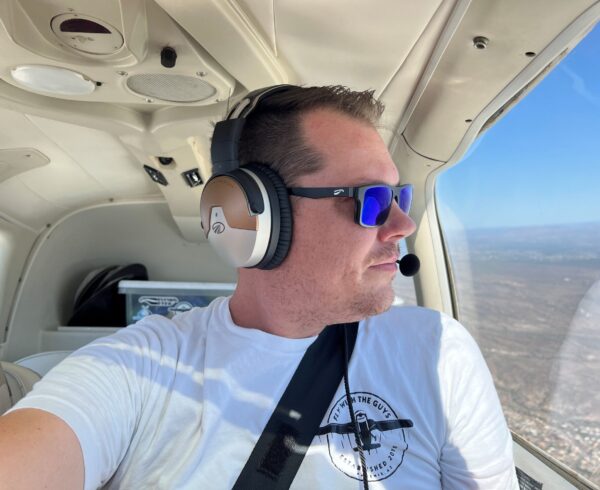Service to our country can come with a high price. According to the U.S. Census Bureau, more than a third (1.5 million) of the nearly 3.8 million men and women who have served in the U.S. Armed Forces since September 2001 have a service-connected disability. The Veterans Airlift Command (VAC) was founded to help repay our debt to these heroes. VAC provides free, private air transportation to our nation’s combat injured veterans for medical or other compassionate purposes through a national network of volunteer aircraft owners and pilots.
VAC was founded by Walt Fricke, a decorated Army aviator who flew hundreds of missions as a combat helicopter pilot in Vietnam. After a rocket exploded while his unit was prepping a landing zone, he spent six months in a hospital far from home, so he knows firsthand the difficulties that combat wounded face. He was flown back to the U.S. on Veteran’s Day and delivered to a hospital in Fort Knox, Kentucky, 700 miles from home. His working-class family didn’t have the resources to fly out right away and spend time with him, so the wounded 20-year-old was left by himself to deal with the possibility of losing his leg and anxiety so bad he couldn’t eat. Fricke’s story had a happy ending: eventually, his family was able to come visit him, he began to heal, his foot and leg were saved, and he went on to have a successful career at General Motors.



Fast-forward almost 40 years to 2006. The U.S. was again at war overseas, this time with Operation Iraqi Freedom, and Fricke had just retired from General Motors. He says “The hospitals were filling up with wounded from Iraq and Afghanistan, and I had an airplane. I thought, ‘You know, that problem that I had as a wounded kid, getting my family there and getting home on convalescent leave, I could solve that for somebody with my airplane.’” He talked to the Veteran’s Administration and started looking for military families that needed a ride. Then a friend challenged him to take the idea national, and VAC was born. Today, VAC has 2,700 volunteer pilots who have flown over 20,000 passengers in support of wounded veterans.
“Our pilots support veterans who, in many cases, have lifelong challenges as a result of their willingness to go and serve on our behalf. We have the freedom to fly our airplanes because of what these people have done for us over the last 100 years. Our pilots have a chance to sign a thank-you note with their airplanes to our combat veterans.”
Walt Fricke
VAC flights are 100% donated, mostly by pilots using their own planes, although some owners and businesses also donate the use of their aircraft. VAC missions often exceed 250 miles, so the organization looks for either multi-engine or high-performance single-engine aircraft that can seat at least 4 people. Volunteer pilots must have their IFR certification. Fricke guesses that 30–40% of VAC’s pilots are ex-military, but he points out that, “All the people that fly for us are serving their country. Clearly, they are patriots.”
Fricke says he’ll never forget the first VAC flight. There was a Marine who had been wounded in Afghanistan. He was home on convalescent leave when his unit returned to Camp LeJeune, North Carolina, from the desert. Fricke says, “For these young Marines, the unit becomes their family, and seeing that family again is a huge part of the healing process.” Fricke had just launched his new website when the Department of Defense called him for help. The Marine had a frequent flyer ticket, but the trip would have taken 13 hours on commercial flights, and the young man was in a wheelchair and exhausted. So, Walt put out an email to eight pilot friends, and five volunteered for the trip. The Marine was transported in comfort, and the trip took only two and a half hours. After the flight, one of the pilots posted something on a chat list, and Walt instantly had 20 more pilot volunteers. He says, “I knew then we had something that would capture people’s hearts and they would want to do it. Sometimes I think our pilots get even more out of it than our passengers do.”


Fricke says the dedication of VAC volunteers is humbling. “Some pilots will fly a veteran across the country and fly back deadhead. One time, we had a Marine private in D.C. who wanted to get to San Diego to see his unit before they were shipped back overseas. A volunteer who was an ex-Marine sent his Gulfstream jet with crew to fly the Marine to the gathering, flew the crew back to Tampa, Florida, on commercial flights at his own expense, and then flew them back to San Diego a few days later to pick up the Marine and take him home.” Volunteering can also be life-changing for VAC pilots. “It starts with volunteer flying, and then they find other ways to get involved. For example, one of our pilots told me he couldn’t fly a mission because he had a business meeting that he’d been trying to book for six months. I told him, ‘In 10 years, you won’t be able to tell me what that meeting was. But if you do this flight, in 10 years, it will have changed your life.’ Since then, he’s not only flown hundreds of missions for us, he’s also set up his own foundation and has raised over $20 million to build homes and provide other support for combat-wounded veterans.”
Another early mission showed Fricke how VAC flights provide veterans with much more than transportation. An Army Special Forces veteran had lost his legs and gotten prosthetics at Walter Reed Hospital. He wanted to go to Minnesota to go fishing with his father, so VAC offered him a ride. With his new prosthetics, he was having difficulty getting up the steps into the King Air. He had to turn around and sit on the floor, with Fricke behind to make sure he didn’t fall. “This is a Green Beret with over 20 years in service, who had done nine tours in Iraq. A top-of-the-spear kind of guy, and he’s struggling to get into the airplane. A commercial airline could have provided special accommodations, and I wondered if we were doing the right thing. So, I asked him, ‘How does this compare with a first-class seat on a commercial flight?’ He broke down and a tear ran down his cheeks. He said, ‘This is a billion times better because I know you guys love me. I’m not just a number or a piece of baggage.’ Right then, I knew we were doing the right thing. These people would need transportation for the rest of their lives, and we were going to provide it.” In Fricke’s mind, there’s no greater privilege than flying combat-wounded veterans. “Our pilots volunteer out of a sense of patriotism and support for veterans who, in many cases, have lifelong challenges as a result of their willingness to go and serve on our behalf. We have the freedom to fly our airplanes because of what these people have done for us over the last 100 years. Our pilots have a chance to sign a thank-you note with their airplanes to our combat veterans.”















Leave a Comment